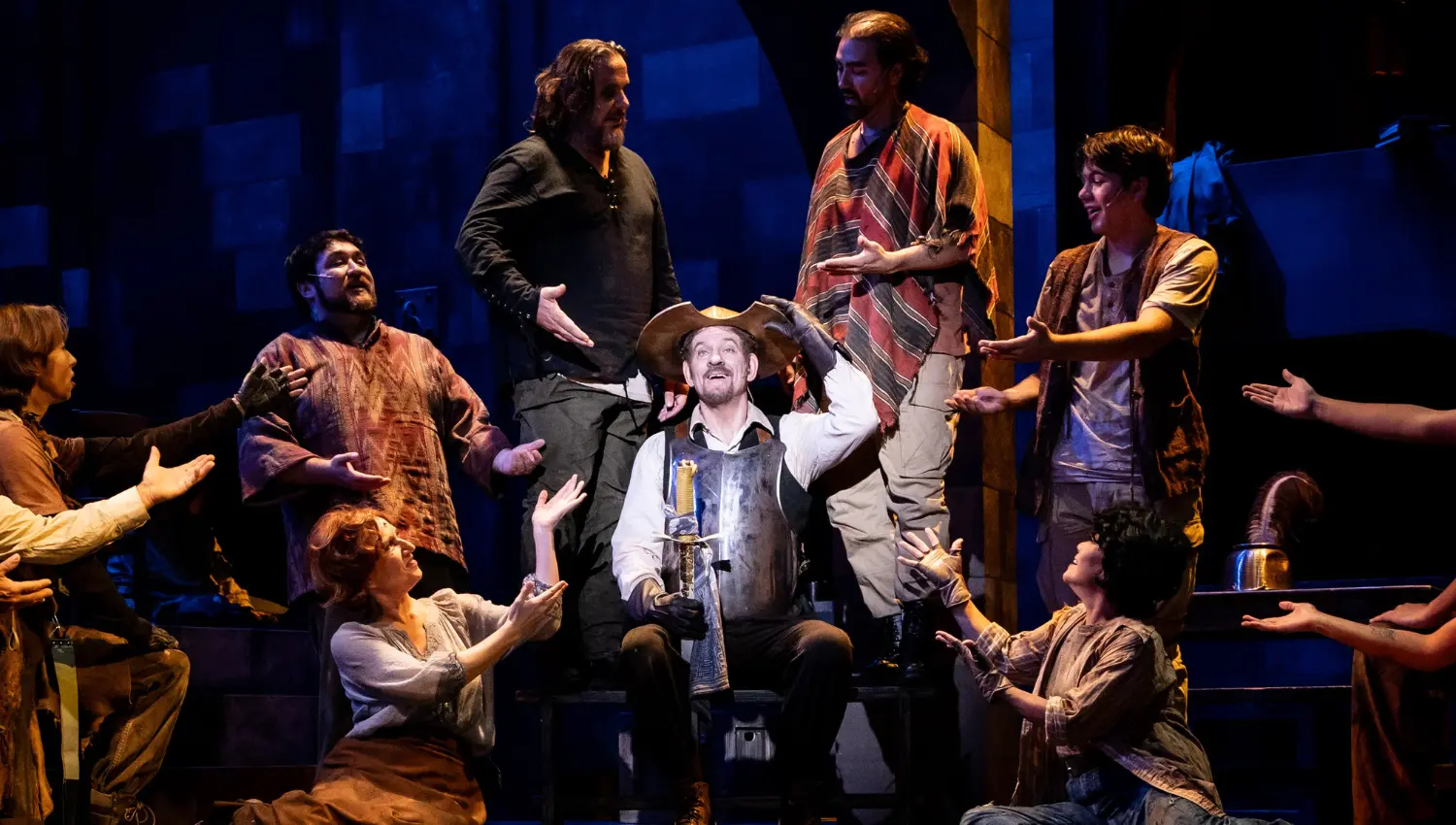
May 2025 — We asked our Director of Man of La Mancha, Bryce Chaddick, about his trip to Spain and the inspiration behind his concept of this production.
It was mid-winter, overcast and raining the entire time. I'm pretty sure I was the only fool traipsing around small, rural towns of La Mancha in the off-season on such a silly quest. I drove around various historical sites attributed to Miguel Cervantes and geographic locations visited by his fictional hero. By the end of my journey, I discovered a great literary irony: there wasn't much to look at. With its central motif on the complexities of idealism and the tension between imagination and reality, Cervantes set "Don Quixote" in one of the most bland corners of Spain. According to stories and histories, La Mancha was mostly a forgettable place where one rode through, not to, comprising a series of country roads by which traders, muleteers, clergy, Muslims and Catholics, and petty criminals had to trek to get to the next hub. Compared to the rest of Spain, glittering with its Baroque architecture, lush vineyards, electric nightlife, and stunning beaches, La Mancha was mostly windmills and mules... and well, wind.
Aesthetically, I may as well have driven from Stockton to Bakersfield, California (no hard feelings, folks from Central Valley!). Manchegans themselves seemed largely reserved, not outgoing like the coastal or central cities, and clearly not too interested in tourism save for the small, Quixote-embracing business owner. In fact, in the smaller towns I stayed in, I was hard-pressed to find a nice place for dinner, let alone a coffee shop early in the morning, let alone a single bookstore. The towns were distinctly Spanish and fairly plain, each with little ambition amongst its cracked, white-washed stucco edifices, and the occasional subtle hint of any Mudéjar and Gothic influence that was able to wander its way into the countryside.
Despite scant options to lure international visitors, Manchegans cling very proudly to the world's first modern novel, which was all about their homeland and derived from one of its sons. On the front of every tourist guide features Campo de Criptana, where Quixote had his infamous duel with the shape-shifting Matagogre (or to some cynics, a windmill). Montiel, where he first sallies forth with his peasant-neighbor, Sancho Panza. El Toboso ("Where you can buy chickens cheap"), a dinky little town with a bronze statue of Dulcinea in its town center and a museum with an authentic 16th-century kitchen where she might have worked. Puerto Lápice, where our fictional inn and innkeeper supposedly allowed Quixote to set up camp. Villanueva de los Infantes, a name which Cervantes had no desire to remember, is believed to be Don Quixote's hometown.
The magical Cave of Montesinos, where Quixote claimed to fall asleep for three days. I kept having to remind myself: "These were not real people. This is a work of fiction." But for Manchegans, the legend is just as real, if not more real ("Facts are the enemy of truth!"), than the actual historical spots Cervantes traversed, many of which I also visited: Alcalá de Henares - his birthplace in a small university town; the theatre town of Almagro, which still produces some of Cervantes' lesser-known works; Argamasilla de Alba, where Cervantes was in debtor's prison and allegedly began writing the novel; his apartment in the Barrios de las Letras in Madrid, where he might have finished it. Even with substantiated evidence of his footprint, all these locations carry, more often than not, a lot of 'possibly,' 'allegedly,' and 'supposedly' descriptors, leading one to consider how consistently murky it is, this border of history and legend. When enough time has passed, how real is reality, when memories morph into myth. One thing is certain: it was no accident that Cervantes chose this spot, with all its contradictions, its unflattering landscape, and its closed-off denizens.
While making fun of the monarchy, the church, other writers, and pretty much everyone in between, Cervantes wrote one of the most humanistic and empathetic stories ever conceived. Balancing facetiousness and pride for his homeland, he concocted a story of a man who challenged everyone around him to see the possibilities of what might be, one that has been treasured by the world and his nation for 420 years (and me for upwards of 22). But it wasn't until visiting this unremarkable realm and seeing the pride of its people and their literary heritage that I realized how beautiful La Mancha actually was to a perceiving mind, transforming my own silly quest, and all my meandering pathways to nowhere, to be just as noble as the adventures of our beloved Knight.
MAN OF LA MANCHA is presented by arrangement with Concord Theatricals on behalf of Tams-Witmark LLC. Click here to buy tickets and experience the journey for yourself.
Photo Credit: Brandon Miyagi









